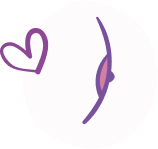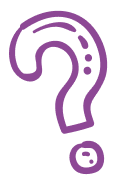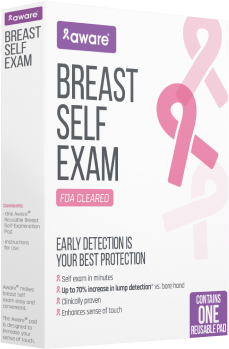Breast Self-Exam
can save your life

“Most women’s breasts have lumps and bumps in them, and it is important for a women to do self-breast exams, so that she knows where her normal lumps and bumps are. So that if there is ever a new lump, she will be the first one to find it and seek a doctor’s attention.”
Benjamin Goldman, M.D., North Shore University Hospital

Breast Self-awareness*
Knowledge of your body is key to good health. If you don’t know what you normally feel like, you won’t be able to recognize signs of illness or infection.
Breast awareness can’t prevent breast cancer, but it may help you to better understand the normal changes that your breasts undergo and identify any unusual signs and symptoms. Regular Breast Self-Exams (BSE) help us to feel more comfortable and gives us a baseline of how we look and feel. You will be able to recognize changes promptly.
Only 20-30% of women are doing monthly breast self-exams, even though statistics report that most breast irregularities are found by women themselves. Many women do not perform BSE for fear of finding something.
Don’t panic if you think you feel a lump in your breast, in 8 of 10 times, it is nothing to be alarmed about. Normal breast tissue is composed of firm glandular tissue and soft fatty tissue which feels lumpy and bumpy all the time. Variation in the lumpiness is directly affected by the menstrual cycle.
Weight gain or loss changes the amount of fatty tissue in the breast, which may change the contour and texture of the breast, so it is important to compare your breasts side by side for changes. It is not unusual for one breast to be larger than the other.
Performing Breast Self-Exams in conjunction with other screening methods, e.g. clinical annual exams by a doctor and periodic mammograms, can increase the chance to detect breast cancer early.
Report any changes found by BSE to your doctor for proper evaluation. Over 80 percent of biopsied breast abnormalities are proven benign, but any breast lump must be evaluated by a doctor.


When is the best time to examine your breasts?
Examine your breasts once every month within a week after the end of your menstrual period. This is the time when your breasts are least likely to be tender or swollen.
Post-menopausal breast self-examination should be performed about the same time each month, preferably on the same day of the month. Choose a day that is easy to remember – perhaps the first day of the month.
Routine breast self-examination should not be performed during ovulation times and prior to menstruation, since fluid retention in breast tissue results in lumpier, fuller breasts and increased tenderness of the tissue.
*Sources: https://www.breastcancer.org/symptoms/testing/types/self_exam (accessed 20 Aug 2021)

Aware ®
The Aware® Pad is an innovative, CE-marked medical device designed specifically to help you detect the subtlest changes in your breast tissue, enhancing the effectiveness of breast self-examination.

